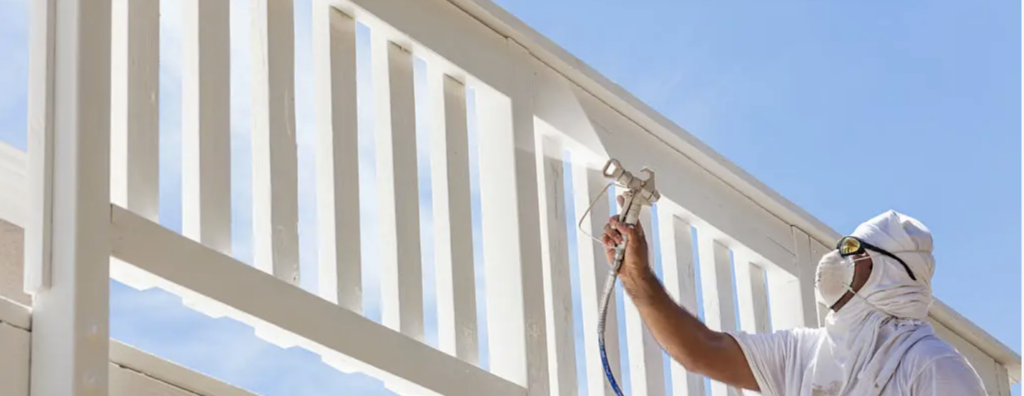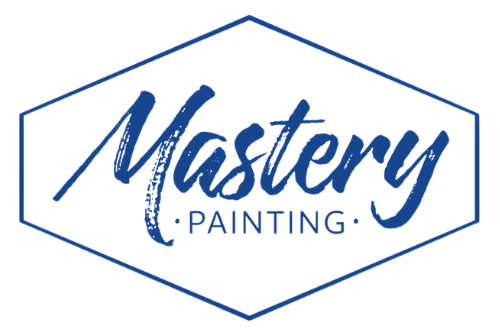DIY vs. Professional Painting: Which Option Is Best for Your Home?

Painting your home is one of the most effective ways to refresh its look, increase curb appeal, and even boost property value. But when it comes to house painting, should you do it yourself or hire a professional? The right choice depends on several factors, including your budget, time, skill level, and the results you want to achieve.
In this guide, we’ll break down the pros and cons of both options to help you decide which one is best for your home.
DIY House Painting
Pros of DIY Painting
Painting your home yourself can be a rewarding and cost-effective option for homeowners who are willing to put in the time and effort. One of the biggest advantages of DIY painting is the potential for significant cost savings. By eliminating labor costs, you can stretch your budget further, especially if you already have essential painting supplies on hand. This means your main expenses will likely be limited to paint, brushes, rollers, and other minor tools.
Personal Satisfaction
Beyond the financial benefits, DIY painting also offers a great sense of personal satisfaction. Completing a home improvement project on your own can be incredibly rewarding, giving you a sense of accomplishment and pride in your work. Additionally, you have the flexibility to work at your own pace and on your schedule. Whether you want to tackle the project over a weekend or spread it out over several days, you’re in full control of the timeline.
Customization
Customization is another advantage of painting your home yourself. Since you’re making all the decisions, you can experiment with different colors, finishes, and techniques without feeling rushed or pressured. Whether you want to try an accent wall, test unique textures, or change your mind halfway through, the freedom to make adjustments as you go can be a major perk. However, while DIY painting has its benefits, it’s important to consider the challenges as well, such as the time commitment, potential for mistakes, and the physical effort required.
Cons of DIY Painting
While DIY house painting can be a cost-effective and rewarding project, it also comes with several challenges that homeowners should consider before picking up a brush. One of the biggest downsides is the time commitment. Painting a house especially an entire exterior can take days or even weeks, depending on the size of the project and your availability. What may seem like a simple weekend job can quickly turn into a lengthy and exhausting process.
Another important factor to consider is the skill level required in house painting. Achieving a professional-quality finish isn’t just about applying paint; it requires proper technique. Even brush strokes, smooth rolling, and precise edging all play a crucial role in ensuring a clean and polished look. Without experience, it’s easy to end up with streaks, roller marks, or uneven coverage.
Additionally, equipment costs can add up quickly. While DIY painting can save on labor expenses, investing in high-quality tools is essential for a successful outcome. If you don’t already own brushes, rollers, ladders, painter’s tape, or even a sprayer for large areas, these extra costs can make DIY painting less budget-friendly than expected.
Finally, the risk of making mistakes is another drawback to consider. Common DIY errors include uneven coats, visible drips, missed spots, or improper surface preparation—all of which can affect the final result. A rushed or inexperienced paint job may require touch-ups or even a complete redo, ultimately costing more time and money than initially planned. Before deciding to paint your home yourself, it’s important to weigh these challenges against the benefits to determine if DIY is the right choice for you.
Professional House Painting
Hiring a professional painter can be a great investment for homeowners who want high-quality results without the hassle of doing it themselves. While it comes at a higher cost, the expertise, efficiency, and reliability of a professional can make a significant difference in the outcome. Below are the key advantages and potential drawbacks of hiring a professional painter.
Pros of Hiring a Professional Painter
High-Quality Results: One of the biggest benefits of hiring a professional painter is the superior finish they can achieve. With years of experience and specialized training, professionals know how to apply even coats, create clean lines, and avoid common DIY mistakes like streaks or roller marks. Their expertise ensures that the final result looks smooth, polished, and long-lasting, giving your home a fresh and professional appearance.
Time Efficiency: Painting an entire house, whether inside or out, is a time-consuming process. A professional team can complete the project much faster than a DIY approach, allowing you to enjoy the transformation without spending weeks on the task. They have the skills and manpower to work efficiently, minimizing disruptions to your daily routine while still delivering high-quality results.
Proper Equipment and Materials: Professional painters come equipped with the right tools and materials for the job. From high-quality brushes and rollers to advanced sprayers and ladders, they have everything needed to tackle any type of painting project. They also have access to premium paints that offer better coverage and durability, ensuring a longer-lasting finish that resists peeling, cracking, and fading.
Expert Preparation: A successful paint job starts with proper preparation, which is often overlooked in DIY projects. Professional painters understand the importance of cleaning, repairing, and priming surfaces before applying paint. They know how to handle issues like peeling paint, water damage, or uneven surfaces to ensure that the new paint adheres properly and lasts for years to come. Their thorough preparation process helps prevent premature wear and costly touch-ups.
Warranty and Insurance: Many professional painting contractors offer warranties on their work, giving you peace of mind that the job is done right. If any issues arise after the project is completed, they may provide touch-ups or repairs at no extra cost. Additionally, licensed painters carry insurance, which protects you from liability in case of accidents or property damage during the project. This added security can make hiring a professional a safer and more reliable choice.
Cons of Hiring a Professional Painter
Higher Costs: One of the main drawbacks of hiring a professional painter is the cost. Labor charges can significantly increase the overall expense compared to a DIY project. However, this added cost often reflects the quality, efficiency, and longevity of the work. If you’re on a tight budget, it’s important to weigh the benefits of a professional finish against the financial investment.
Less Control Over the Project: When hiring a painter, you’ll need to communicate your vision clearly and trust them to execute it correctly. While professionals strive to meet your expectations, you may not have as much creative freedom as you would with a DIY project. Choosing the right painter and discussing details like colors, finishes, and techniques in advance can help ensure that the final result aligns with your vision.
Scheduling Constraints: Professional painters often have busy schedules, and you may need to work around their availability. If they’re booked weeks in advance, your project could be delayed, especially during peak seasons. While this can be inconvenient, planning and scheduling early can help ensure that your home is painted within your desired timeframe.
When to Choose DIY vs. Professional Painting
Deciding between DIY painting and hiring a professional depends on the size, complexity, and goals of your project. While some homeowners may enjoy the hands-on experience and cost savings of a DIY approach, others may prefer the convenience and expertise of a professional painter. Below, we break down when each option is the best choice.
DIY is Best For:
Small Interior Projects: If you’re painting a single room, an accent wall, or touching up existing paint, a DIY approach can be a practical and cost-effective choice. Smaller projects require fewer materials and less time, making them manageable for most homeowners without professional help.
Experienced DIYers with the Right Tools: If you have prior painting experience and already own essential tools like brushes, rollers, painter’s tape, and ladders, taking on the job yourself can be a great way to save money. Familiarity with painting techniques, such as cutting in and rolling evenly, can help you achieve a professional-looking result.
Homeowners with Flexible Schedules: DIY painting is ideal for those who can work at their own pace and don’t need the job done quickly. If you have extra time and enjoy tackling home improvement projects, DIY painting allows you to complete the work on your terms without feeling rushed.
Budget-Conscious Homeowners: If saving money is a priority, doing the painting yourself can be a great way to cut down on labor costs. However, keep in mind that investing in quality paint and supplies is still essential to achieving a durable and visually appealing finish. DIY is a smart choice for those willing to trade time and effort for financial savings.
Hiring a Professional is Best For:
Large-Scale Projects: If you’re repainting an entire home—especially the exterior—hiring a professional is often the best option. Large projects require extensive prep work, multiple coats, and specialized equipment to ensure an even, durable finish. A professional team can complete the job efficiently while maintaining high-quality results.
Homes with Complex Architecture or High Ceilings: If your home features intricate trim work, vaulted ceilings, or hard-to-reach areas, professional painters have the expertise and equipment to handle these challenges safely and effectively. Climbing tall ladders and working on scaffolding can be risky for untrained individuals, making professional services a safer and more practical choice.
Homeowners Seeking Long-Lasting, High-Quality Results: Professional painters use top-tier paints, advanced techniques, and proper surface preparation to ensure a long-lasting and flawless finish. If you want your home’s new paint job to look great for years to come, investing in a professional service can be well worth it.
Individuals with Limited Time, Experience, or Physical Ability: Painting can be physically demanding, especially for those with little experience or mobility limitations. If you don’t have the time, patience, or physical ability to complete the job correctly, hiring a professional ensures that the work is done efficiently, safely, and to a high standard—without added stress on your part.
Both DIY and professional painting have their advantages, and the right choice depends on your specific needs and circumstances. If you’re tackling a small project and have the time and skills to do it well, DIY painting can be a rewarding and budget-friendly option. However, for larger or more complex jobs, hiring a professional can save time, effort, and potential frustration while delivering superior results.
Final Thoughts
Deciding between DIY and professional painting comes down to your priorities. If you have the skills, tools, and time, a DIY approach can be a cost-effective and rewarding way to refresh your home. However, if you want a flawless finish, long-lasting results, and a hassle-free experience, hiring a professional is the best investment. No matter which route you choose, a fresh coat of paint can completely transform your space, boost curb appeal, and add value to your home.
For a professional, high-quality paint job that enhances your home’s beauty and durability, trust Mastery Painting. Our expert painters deliver stunning results with precision and efficiency. Contact us today for a free estimate and let’s bring your vision to life!
